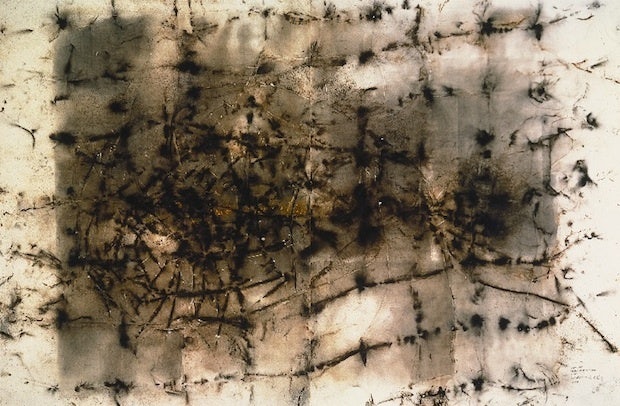Beijing-Based Private Consultancy & Art Gallery Opened In November 2005#

For outside observers, the Chinese art market -- which is now being shaped by the emergence of domestic Chinese auction houses and collectors -- can be somewhat difficult to follow. Led by a handful of "blue-chip" contemporary artists, who were raised during the Cultural Revolution and gained notoriety and fame in the 1990s as Western (then Asian) collectors turned their attention to Chinese art, the market is now being populated by a growing number of young artists from the country's "post-80s generation." So what should aspiring collectors know about the dynamics currently influencing China's art market, and how can they ensure they're seeing (and buying) the right artists?
Recently, Meg Maggio, founder, curator and director of Beijing's
Pekin Fine Arts#
gallery, weighed in on the subject in an
ArtTactic#
interview. In the discussion, Maggio goes into the current buzz surrounding the Chinese art market and search for the country's next art stars, the emergence of Chinese and other Asia-based collectors as a regional force, and the changes that she's seen in the Chinese art market over the past 20 years.
From the interview:
Adam Green (AG): Within the overall, broader contemporary art market, so within the US and Europe, right now we’ve been hearing a lot about a selective buyer base who’s willing to pay substantial prices for high quality works, but due to the economy it seems like they’re not really chasing lower quality works, something they may have been doing in the past during the art market boom. What are your thoughts on the maturation of the Chinese contemporary art market? To what extent are you seeing this type of selectiveness occurring in the Chinese contemporary art market?#
Meg Maggio (MM)#
: Well, to a much lesser degree. Right now, it’s July, it’s summer. Traditionally in the art world we could say July is a slowdown time when a lot of people start to think about summer holidays. Here, it’s very different. July for us is rather busy. We get a lot of visitors in the summer, we get a lot of new exhibitions opening and there’s less attention paid to Western art world scheduling and life goes on busy as always here in China.
As far as the attention to the high-end works, I think the situation is very different here where there’s first of all, a great deal of attention paid to the development of the Chinese art market beyond only the most expensive works. Now there’s a lot of excitement here about who are going to be the next generation of rising stars coming from mainland China or Chinese artists living abroad. I think the first generation of superstars, many of whom were pop artists or multimedia artists who emerged in the 90’s, up into the late 90’s and into the 2000’s are well established and everyone sort of agrees on the quality of their work and their importance in Chinese contemporary art history and now people are very keen to discover the next generation of stars coming from China.
[...]
AG: If you could, paint a picture for us of how much the Chinese art market has grown since you arrived there.#
MM#
: I think it’s important that people understand that the Chinese art market like most of the Chinese economy has become completely globalized. But at the same time this is a very strong local art market. So in the 90’s and even in the 80’s when I first started buying art from China and Japan and this part of the world, at the very beginning not only in Asia but around the world, people buying and collecting art were art lovers, they weren’t traders. The art world wasn’t considered a trade or an industry. Whether we like it or not, the art world has now become quite a trade and industry based community, which is sometimes rather frightening.

The business of being in the art world has exploded worldwide and in China I think that’s brought a lot of positive results including increased transparency, increased knowledge, increased access to information. So the market here is much more sophisticated than I think visitors anticipate or expect when they come here. And most of the collectors here have done their homework, they get excited.
For example, there was a very big Tony Cragg exhibition here in Beijing that was organized by the British Council. I had several clients who saw the exhibition and got excited and wanted to buy a Tony Cragg because they saw a wonderful Tony Cragg museum exhibition come to Beijing. So, I think their learning curve is very fast and very steep and we as westerners have got to get up to speed on how fast things are moving here.
